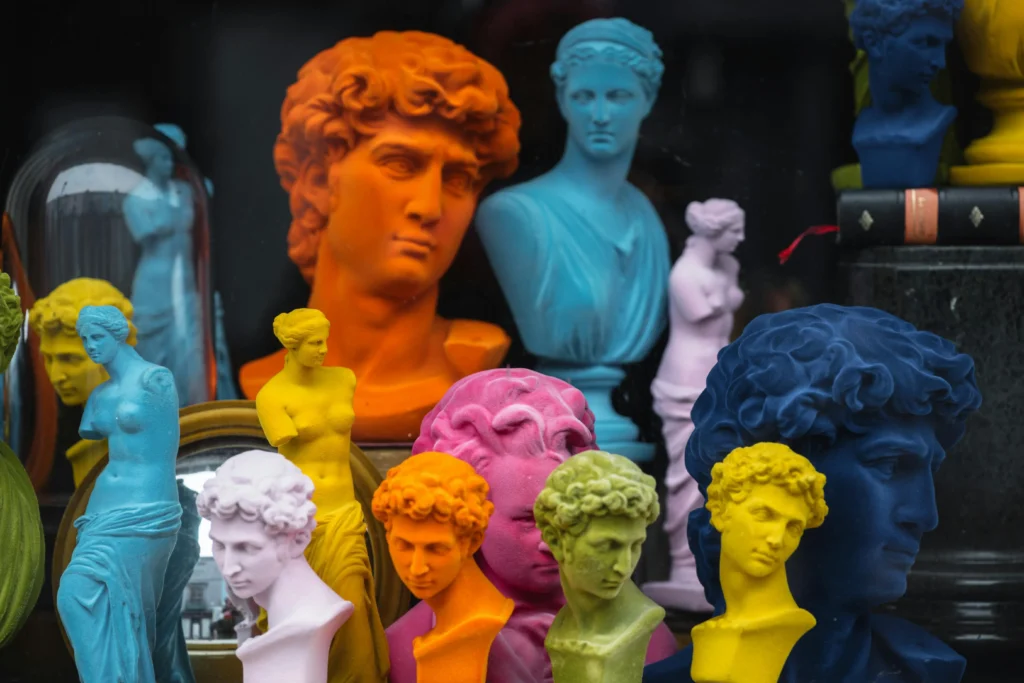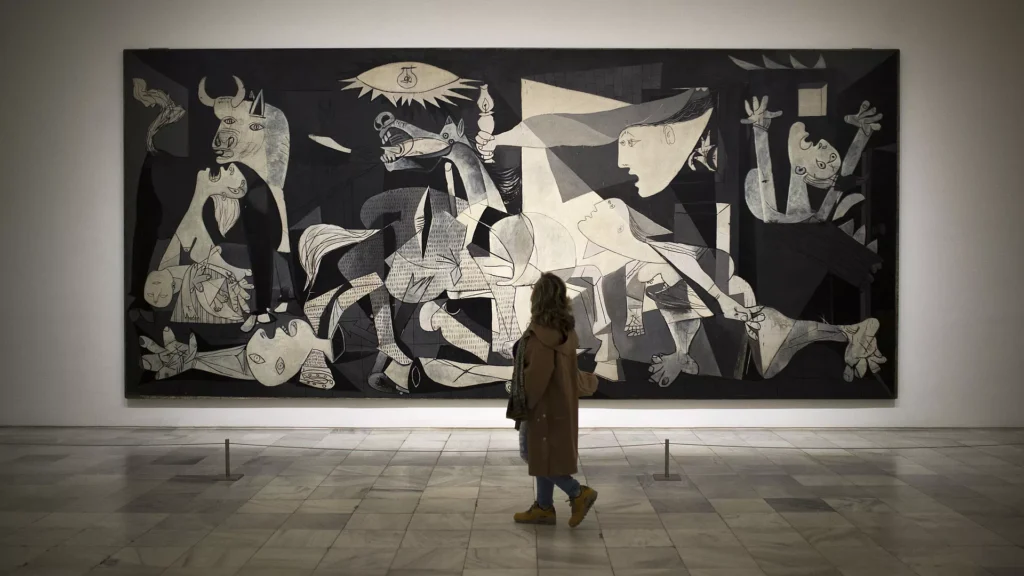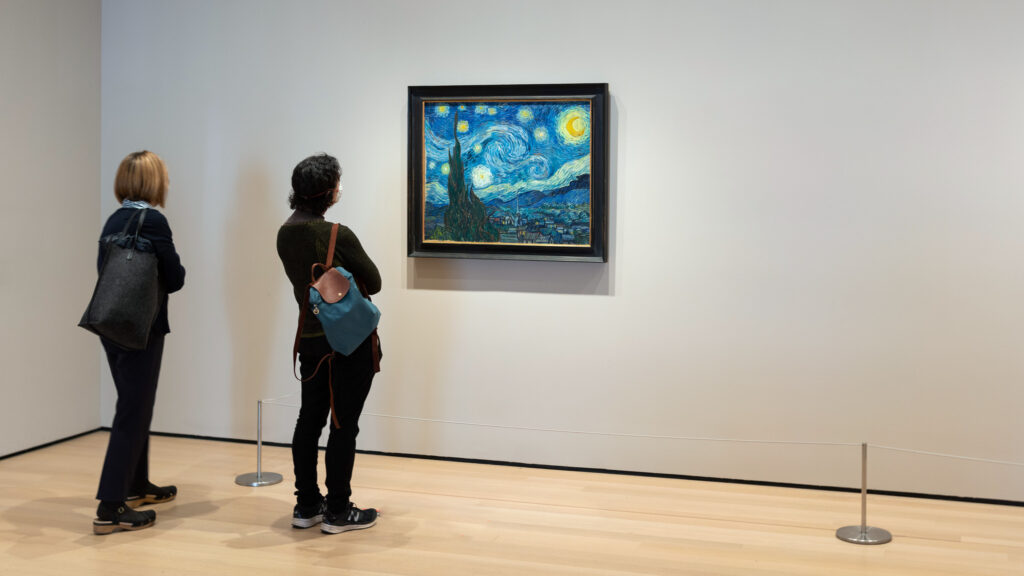"Art is the window to the soul of humanity, revealing our deepest emotions, thoughts, and aspirations."
Unknown
Introduction:
Art has the remarkable ability to transcend time and space, leaving an indelible mark on society and culture. Certain artworks have achieved legendary status, forever altering the course of history and inspiring generations to come. In this article, we will delve into the stories behind some of these iconic masterpieces, exploring their significance and enduring legacy.

I. The Mona Lisa:
A Portrait of Enigma Leonardo da Vinci’s masterpiece, the Mona Lisa, is an enigmatic portrait that has captured the imagination of viewers for centuries. With her subtle smile and mesmerizing gaze, the Mona Lisa continues to intrigue and mystify art lovers around the world. Painted in the early 16th century, this iconic artwork exemplifies the Renaissance ideals of beauty, proportion, and humanism. Its meticulous attention to detail and innovative techniques, such as sfumato (the blending of colors and tones), showcase da Vinci’s unparalleled skill as a painter. The Mona Lisa’s enduring popularity has made it a symbol of artistic brilliance and a cultural icon, with millions of visitors flocking to see it at the Louvre Museum in Paris each year.

II. Michelangelo’s David:
The Epitome of Renaissance Idealism Michelangelo’s David stands as a towering testament to the artistic achievements of the Italian Renaissance. Carved from a single block of marble in the early 16th century, this monumental sculpture embodies the classical ideals of beauty, strength, and perfection. Standing at an impressive 17 feet tall, David is a symbol of human potential and resilience, capturing the essence of the Renaissance spirit. Michelangelo’s masterful use of form, proportion, and anatomical detail elevates David to a work of timeless beauty and significance. Today, this iconic artwork continues to inspire awe and admiration as one of the greatest sculptures ever created.

III. Guernica: Picasso’s Cry Against War:
Pablo Picasso’s Guernica is a powerful indictment of the horrors of war, created in response to the bombing of the Basque town of Guernica during the Spanish Civil War. Painted in 1937, this monumental artwork serves as a timeless reminder of the human cost of conflict and the suffering it inflicts on innocent civilians. With its stark imagery and bold symbolism, Guernica captures the anguish and despair of war, while also conveying a message of hope and resilience. Picasso’s use of distorted figures and vibrant colors creates a sense of chaos and urgency, drawing viewers into the heart of the tragedy. Guernica’s impact extends far beyond the art world, inspiring activism and advocacy for peace in the face of adversity.

IV. The Starry Night:
Van Gogh’s Visionary Masterpiece Vincent van Gogh’s Starry Night is a mesmerizing depiction of the artist’s inner turmoil and transcendent vision. Painted in 1889 during a tumultuous period in van Gogh’s life, this swirling nocturnal landscape is infused with emotion and symbolism. The vibrant colors and dynamic brushwork convey a sense of movement and vitality, while the towering cypress tree and swirling sky evoke a sense of wonder and awe. Despite van Gogh’s struggles with mental illness and personal demons, Starry Night remains a testament to his enduring creativity and artistic genius. Its timeless beauty and universal appeal have made it one of the most beloved artworks of all time, inspiring countless interpretations and adaptations.

V. The Scream:
A Symbol of Existential Angst Edvard Munch’s The Scream is a haunting portrayal of existential dread and anxiety, capturing the angst and alienation of modern life. Painted in 1893, this iconic image features a figure with a contorted face and hands clasped to the ears, as if in a state of utter despair. The swirling sky and barren landscape add to the sense of isolation and unease, creating a mood of profound unease. The Scream has become a symbol of the human condition, resonating with viewers on a deep and visceral level. Its enduring popularity and cultural significance have cemented its place as one of the most iconic artworks of the modern era.
Conclusion:
Reflecting on Art’s Enduring Influence From the enigmatic smile of the Mona Lisa to the haunting visage of The Scream, these iconic artworks have left an indelible mark on the course of history and the collective consciousness of humanity. Through their power to inspire, provoke, and move us, they have transcended their time and place to become timeless symbols of human creativity and expression. As we continue to marvel at their beauty and significance, let us remember the profound impact that art can have on our lives and our understanding of the human experience.
FAQ:
Question 1: Why are these artworks considered iconic?
Answer: These artworks are considered iconic due to their profound impact on the course of art history and their enduring popularity and significance in the realm of culture and society.
Question 2: Can I see these artworks in person?
Answer: Yes, many of these iconic artworks are housed in museums and galleries around the world, where they can be viewed by the public. However, some may be on loan or temporarily unavailable for viewing, so it’s always a good idea to check ahead of time.
Question 3: How can I learn more about these artworks?
Answer: You can learn more about these artworks by visiting museums, reading books and articles, attending lectures and exhibitions, and exploring online resources. Many museums offer educational programs and guided tours that provide insights into the history and significance of these iconic masterpieces.

